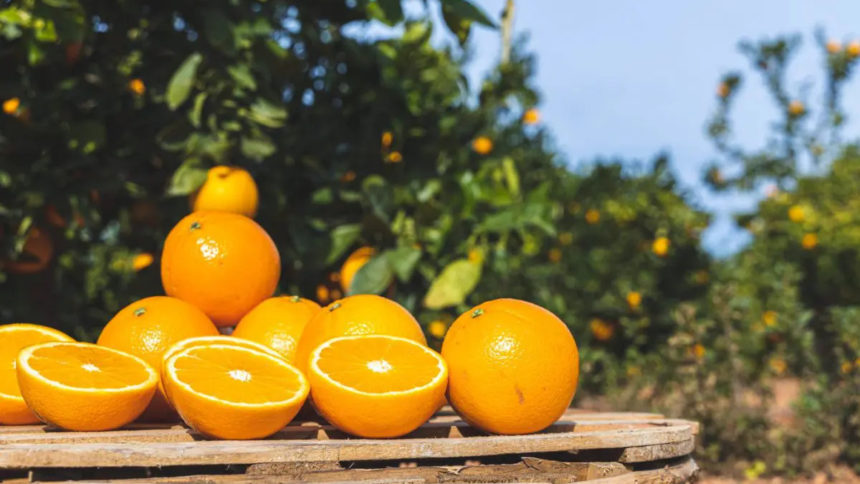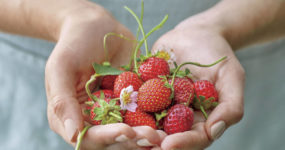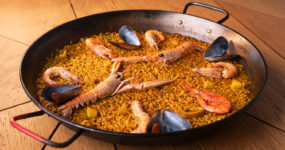For many visitors to Valencia, one of the things that the city is most famed for are its oranges. Crowned the orange capital of Europe, Valencian oranges are thought of as some of the best – sweet, tangy, and not too bitter. ‘Mi media naranja’, translated to ‘my half orange’, has now come to signify ‘my better half’ …such is the significance and pride of Spanish oranges. However, Valencia’s oranges and Valencian oranges take on two distinct meanings. Read on to find out more about the connection between this city and the citrus fruit, alongside some common misconceptions.
Upon arriving in this city, the abundance of citrus trees is likely to draw your attention. Many of the prettier spots in Valencia, such as Jardín de Monforte and La Lonja de la Seda, contain orange trees within their gardens. Aside from adding a sort of mystical quality, these fruits may look tempting enough to bite into. Here lies the first common misconception; unsuspecting visitors will find that these oranges are far too bitter to eat and are solely ornamental. Native to South-Eastern Asia, these ancient oranges travelled from China along the “Silk-Road” to India and the Middle East. From there, the Moors brought them to the Iberian Peninsula, including Spain. They are now known as the Seville orange, or just ‘bitter orange’. Centuries of cultivation apparently brought some milder oranges, but the oranges on the trees were to remain primarily ornamental. In conclusion, I wouldn’t if I were you. They’re apparently shipped off to the United Kingdom to produce marmalade, but you won’t catch Spanish locals picking them off trees.
So, with that in mind, you may be wondering how oranges came to be such a large part of Valencia’s economy. The Valencian region is the largest producer of citrus fruit in all of Europe, producing more than six million tonnes every year. 95% of these outside sales go to other European countries, and the Valencian farms are responsible for about 75% of Spain’s orange production.
Vincente Monzo Vidal, a priest from Carcaixent, was apparently responsible for planting the first orange field in 1781. After finding the Bassa del Rei land too dry, and the water insufficient, wells were drilled into each crop and old Arab waterwheels were assembled, in the mission to create the perfect tasting orange. International commercialisation followed on from this at the beginning of the 19th century. Trading began with merchants, who arrived to sell wheat, and France was the first country to consume the Carcaixent orange. The United Kingdom followed in 1870, with a shipment of fifty boxes.
What makes these oranges so special is Valencia’s ideal geography. Its orange orchards, due to their location, have fertile soils, a breezy Mediterranean climate and good irrigation. The permanent orange scent that hangs around these regions have led to Valencia being dubbed “The Orchard of Spain”.
Valencia’s commitment to this image is clear wherever you go, evidently forming a large part of its branding as a city. Estación del Norte, one of the most famed train stations in Spain, is covered with allusions to oranges. ‘Agua de Valencia’, the now commercialised Valencian cocktail, has orange juice as its main component. This cocktail was originally coined in 1959 by a barman named Constante Gil. Taking centre stage in the 1980s, the cocktail contains cava, orange juice, vodka and gin. Although it is not hard to find this drink along the streets of Valencia, ‘Café Madrid de Valencia’ was its original home. Back in the day, it was called ‘Cervecería Madrid’ and the painter and then owner Constante Gil is said to have invented ‘Agua de Valencia’ here on Carrer de l’Abadia de Sant Martí, 10, 46002 València.
Ever heard of La Ruta del Bakalao? Try La Ruta de La Naranja. Burriana, a one-hour drive away from Valencia and supposedly the orange capital, offers tourists guided tours during the harvest season from October to mid-May. In terms of buying oranges themselves, Mercado Central is certainly the prime destination. Its many stalls inside have their fair share of both citrus fruit and jugo de naranja.
Resultantly, you would likely conclude that the famed Valencian orange must have been created in Valencia. However, this is the biggest myth surrounding the history of Valencia’s oranges. The Valencian orange in fact first came to be in California. The American agronomist, William Wolfskill, hybridised a version of sweet, juicy oranges in the mid-nineteenth century. He named the fruit after Valencia because of its reputation for orange trees, but the orange range themselves are not actually cultivated here – in what is perhaps a confusing name. They remain popular as they are the only oranges to ripen in the summer, and account for over half of Florida’s citrus cultivation in the United States. Interestingly, some websites state that the Valencian orange’s origins are ‘unknown’, or ‘undetermined’. Whether this is true or has come about because of the confusing name is unclear. However, there is enough evidence online to confirm that it does not originate in Valencia.
And what of Valencia’s modern orange economy? Recent articles point to the labour-intensive process of orange picking in Valencia, and how traditional farmers find their wages cut by intermediaries reducing prices. Although the orange is perceived as boosting Valencia’s economy massively, it is undetermined how much of this really goes to those carrying out the hard work. In 2012, ‘Naranjas y Frutas’ was set up by Juan Jose Bas. This organisation acts as a means of connecting farmers directly to their buyers, dramatically increasing their income. Interestingly, the outbreak of covid-19 reported as increasing Valencian citrus farmers’ income, with citrus fruit prices increasing by 0.59 euros per kilo during that period. This is thought to be a result of people being more health-conscious following the outbreak, stocking up on their fill of Vitamin C. Regardless, Bas’s model could point to the future of the orange economy, particularly helping Valencia’s local farmers.
Report by Anusha Vasudeva
Article copyright ’24/7 Valencia’
Related Post
This site uses Akismet to reduce spam. Learn how your comment data is processed.

























Leave a comment